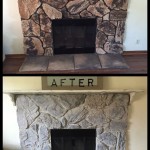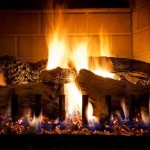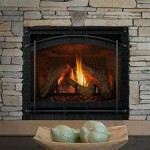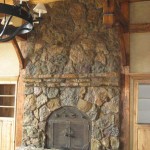Best Fireplace Inserts: Enhancing Efficiency and Aesthetics
Fireplace inserts are self-contained units designed to be installed directly into an existing masonry or prefabricated fireplace opening. They offer a significant upgrade over traditional open fireplaces, providing increased heating efficiency, improved safety, and a cleaner burning experience. Selecting the optimal fireplace insert requires careful consideration of several factors, including fuel type, heating capacity, insert size, and desired aesthetic.
The primary advantage of a fireplace insert is its ability to transform a traditionally inefficient open fireplace into a powerful and effective heating source. Open fireplaces often lose more heat up the chimney than they radiate into the room. Fireplace inserts, on the other hand, are designed to capture and radiate heat effectively, significantly reducing heat loss and lowering energy costs. They achieve this through a combination of insulated fireboxes, sealed combustion chambers, and integrated fans that circulate heated air into the room.
Furthermore, fireplace inserts offer a cleaner and safer burning experience compared to open fireplaces. They minimize the risk of sparks and embers escaping into the room, reducing the potential for house fires. The sealed combustion chamber also prevents drafts and back drafts, improving indoor air quality and minimizing the release of pollutants into the home.
Understanding Different Types of Fireplace Inserts
Fireplace inserts are available in three primary fuel types: wood, gas, and electric. Each type offers unique advantages and disadvantages, making it crucial to select the option that best aligns with your individual needs and preferences.
Wood Fireplace Inserts: Wood-burning fireplace inserts offer the traditional ambiance and heating power associated with wood-burning fireplaces. They typically produce a significant amount of heat and can be an economical heating option, especially if wood is readily available. However, wood-burning inserts require regular maintenance, including wood storage, loading, and ash removal. They also necessitate proper venting and adherence to local regulations regarding wood burning.
The efficiency of wood-burning fireplace inserts is often measured by their EPA (Environmental Protection Agency) certification. EPA-certified inserts are designed to burn cleaner and more efficiently than older, non-certified models, reducing emissions and improving air quality. These inserts typically incorporate features such as catalytic converters or secondary combustion systems to achieve lower emissions.
Gas Fireplace Inserts: Gas fireplace inserts offer convenience and ease of use. They can be operated with the flip of a switch or the push of a button, eliminating the need for wood storage and loading. Gas inserts are available in both natural gas and propane models, providing flexibility depending on the available fuel source. They also offer precise temperature control and consistent heating performance.
Gas fireplace inserts typically require professional installation to ensure proper venting and gas line connections. They also require periodic maintenance, including cleaning and inspection of the burner and venting system. While gas inserts are generally more expensive to operate than wood inserts (depending on the cost of gas), they offer a convenient and low-maintenance heating option.
Electric Fireplace Inserts: Electric fireplace inserts are the most convenient and easiest to install option. They require no venting and can be simply plugged into a standard electrical outlet. Electric inserts do not produce real flames; instead, they use electric heating elements and simulated flame effects to create the ambiance of a fireplace. They offer adjustable heat settings and can be used with or without heat, making them a versatile option for year-round use.
Electric fireplace inserts are generally less expensive to purchase and install than wood or gas inserts. However, they are typically less efficient to operate, as electricity is generally more expensive than wood or gas. They are best suited for supplemental heating or for adding ambiance to a room without the need for significant heat output.
Factors to Consider When Choosing a Fireplace Insert
Selecting the appropriate fireplace insert requires careful consideration of several factors to ensure optimal performance, safety, and aesthetic appeal. These factors include heating capacity, insert size, venting requirements, and desired aesthetic.
Heating Capacity: The heating capacity of a fireplace insert is measured in BTUs (British Thermal Units). The required BTU output depends on the size of the room or area you intend to heat and the climate in which you live. A larger room or a colder climate will require a higher BTU output. It is essential to accurately assess your heating needs to select an insert with the appropriate BTU rating.
Consult with a qualified HVAC professional or fireplace retailer to determine the appropriate BTU output for your specific needs. They can assess your home's insulation, climate, and room size to recommend the optimal insert size and heating capacity.
Insert Size: The size of the fireplace insert must be compatible with the dimensions of your existing fireplace opening. Measure the width, height, and depth of the fireplace opening carefully to ensure that the insert will fit properly. In some cases, minor modifications to the fireplace opening may be necessary to accommodate the insert. However, it is crucial to consult with a professional to ensure that any modifications are performed safely and in accordance with local building codes.
Furthermore, consider the depth of the insert and its impact on the room. A deeper insert may protrude further into the room, potentially affecting traffic flow and furniture placement.
Venting Requirements: Wood and gas fireplace inserts require proper venting to safely exhaust combustion byproducts from the home. Wood fireplace inserts typically require a chimney liner, which is a metal pipe that runs the length of the chimney to prevent creosote buildup and ensure proper draft. Gas fireplace inserts require either a direct vent or a B-vent system, depending on the type of insert and local codes. Direct vent systems vent directly outside, while B-vent systems vent into the existing chimney.
Electric fireplace inserts do not require any venting, as they do not produce any combustion byproducts. This makes them a convenient option for homes without existing chimneys or for situations where venting is not feasible.
Installation and Maintenance of Fireplace Inserts
Proper installation and maintenance are essential for ensuring the safe and efficient operation of a fireplace insert. It is highly recommended to hire a qualified professional to install wood or gas fireplace inserts. Professional installation ensures that the insert is properly vented, connected to the fuel source (if applicable), and meets all local building codes and safety regulations.
Wood fireplace inserts require regular cleaning of the chimney to remove creosote buildup, which can pose a fire hazard. The frequency of chimney cleaning depends on the amount of wood burned and the type of wood used. Gas fireplace inserts require periodic inspection and cleaning of the burner and venting system to ensure proper operation and prevent carbon monoxide leaks. Electric fireplace inserts typically require minimal maintenance, primarily involving cleaning the unit and replacing light bulbs as needed.
Regular maintenance will not only prolong the life of your fireplace insert but also ensure its continued safe and efficient operation. Refer to the manufacturer's instructions for specific maintenance recommendations and schedules.
Ultimately, selecting the best fireplace insert involves carefully considering your individual needs, preferences, and budget. By understanding the different types of inserts available, the factors that influence performance, and the importance of proper installation and maintenance, homeowners can make informed decisions and enjoy the benefits of a safer, more efficient, and aesthetically pleasing heating solution.

10 Best Electric Fireplace Inserts Of 2024 Tested And Reviewed

Best Fireplace Inserts Of December 2024 Forbes Home

Best Fireplace Inserts In 2024

Fireplace Insert Guide Fireplaces Direct Learning Center

10 Best Electric Fireplace Inserts Of 2024 Tested And Reviewed

Comparing Fireplace Inserts What S Best For You Forge Flame

Which Fireplace Inserts Are Best We Love Fire

The Best Wood Burning Fireplace Inserts Or Stoves Ecohome

What S Best A Fireplace Stove Or Insert We Love Fire

Best Gas Fireplace Inserts Fireplaces Direct Learning Center








